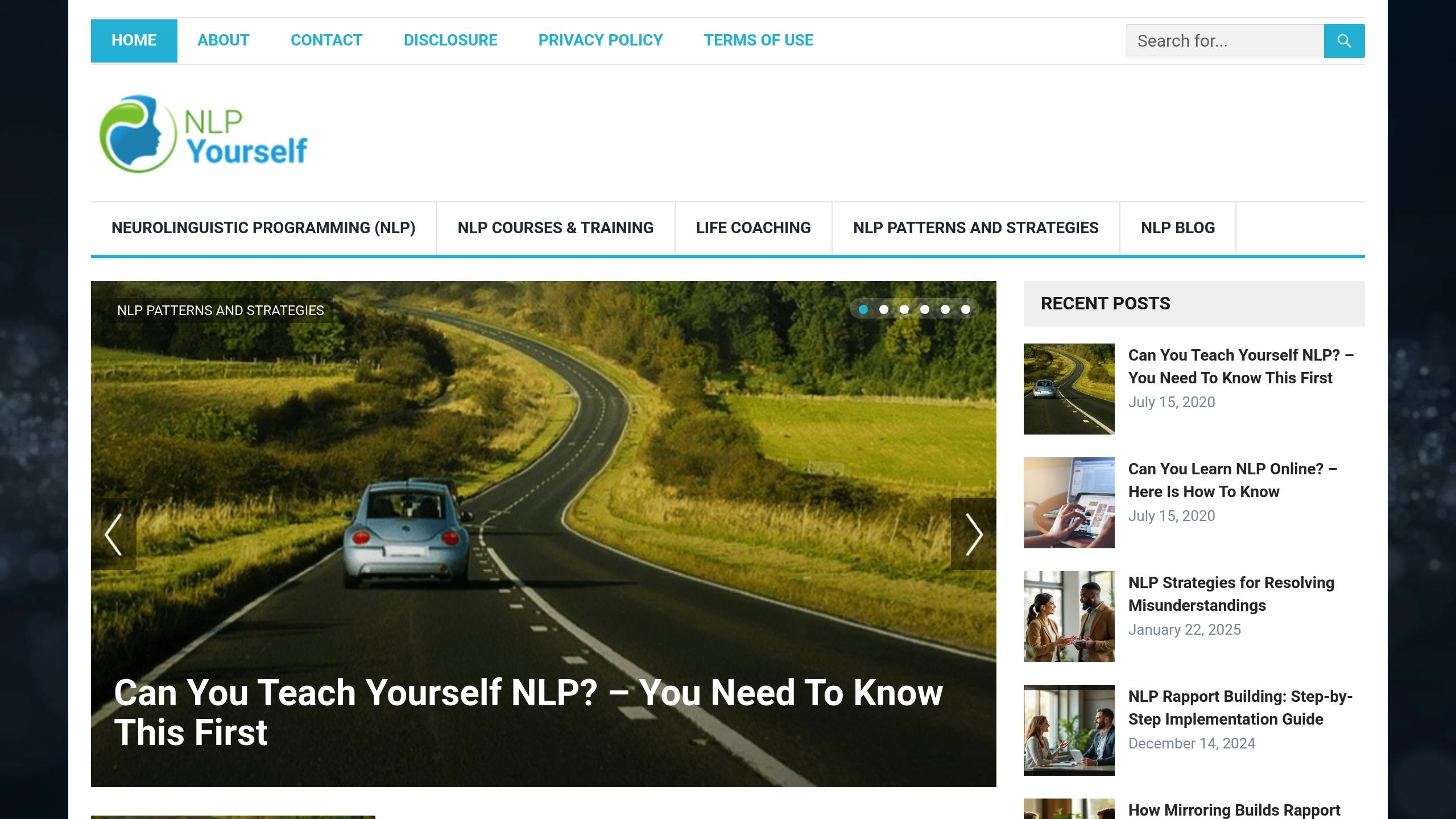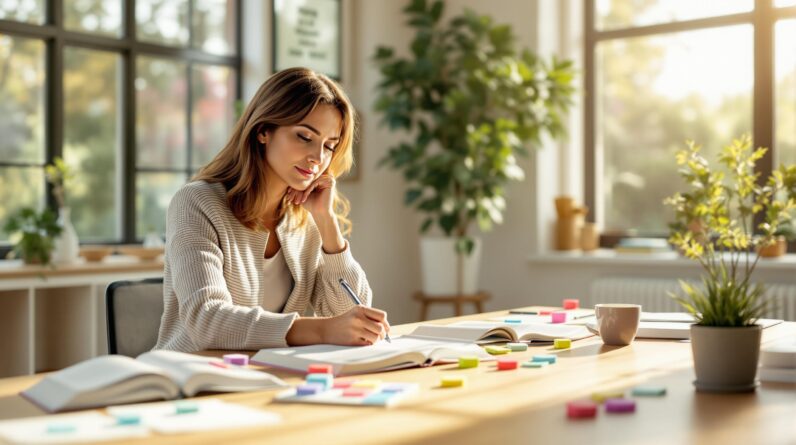
Want to improve communication and coaching? Neuro-Linguistic Programming (NLP) uses Visual, Auditory, and Kinesthetic (VAK) styles to tailor interactions based on how people process information. Here’s a quick guide:
- Visual learners (60%): Prefer images, diagrams, and written content. Use questions like, "What does success look like to you?"
- Auditory learners (20%): Respond to sounds and discussions. Ask, "How would you explain this to someone else?"
- Kinesthetic learners (20%): Learn best through action and touch. Try, "What’s your sense of how this feels?"
Blended styles? Combine techniques and observe cues like "I see", "I hear", or "I feel" to adapt your approach. Platforms like NLP Yourself offer tools to identify and apply these strategies effectively, enhancing communication in coaching, sales, and everyday interactions.
What Is Your Learning Style: Visual, Auditory, Kinesthetic
Question Types for Each Learning Style
Crafting questions that align with various learning styles can make communication much more effective and engaging.
Visual Learners – Questions That Spark Imagery
Visual learners connect best when you encourage them to form mental pictures. Use phrases like "imagine", "picture this", or "visualize." Examples include:
- "What does success look like to you?"
- "Can you sketch how these elements fit together?"
- "How would you draw this idea as a diagram?"
Tools like mind maps or color-coded visuals can also help these learners. NLP Yourself’s training materials emphasize the value of such techniques.
Auditory Learners – Questions That Focus on Sound
Auditory learners process information best through listening and verbal discussions.
"Auditory learning is a learning style that relies on hearing to understand and remember information." – Simplek12 Staff
Ask them questions like:
- "How would you explain this to someone else?"
- "What sounds most appealing about this option?"
- "Let’s talk through this step by step – what do you hear yourself saying?"
This approach encourages thoughtful dialogue and helps auditory learners process ideas effectively.
Kinesthetic Learners – Questions That Engage Action
Kinesthetic learners excel when they can physically engage with the material. Tailor your questions to:
- Relate to physical sensations or emotions
- Invite movement or hands-on demonstrations
- Reference experiences they’ve had in real life
This learning style thrives on doing, making active participation key.
Blending Styles for Mixed Learners
Many people combine elements of these styles, so a flexible approach is often best. If you’re unsure of someone’s dominant style, mix visual, auditory, and kinesthetic elements into your questions. Pay attention to cues like "I see", "that sounds right", or "I feel this is working" to identify their preferences.
sbb-itb-d87b7ee
1. NLP Yourself Features

NLP Yourself builds on the VAK strategies by offering tools to design questions that align with clients’ sensory preferences. The platform focuses on improving communication through sensory-specific questioning, supported by training resources, practical tools, and structured frameworks for creating effective questions.
Training Materials for Sensory-Based Communication
NLP Yourself provides training materials to help users recognize and apply sensory predicates. These materials include categorized word banks, making it easier to tailor communication to different representational systems:
| Representational System | Example Predicates | Question Starters |
|---|---|---|
| Visual | hazy, dim, obscure | "Can you picture…" |
| Auditory | hear, listen, harmony | "How does it sound when…" |
| Kinesthetic | feel, warm, touch | "What’s your sense of…" |
Practical Tools for Everyday Use
One standout feature is the "Communication Skills for Sales Staff" program , which trains users to adjust their questioning style based on customer sensory preferences. For example, call center agents learn how to recognize and match a customer’s preferred sensory system, improving both call flow and the effectiveness of their questions.
Advanced Techniques for Question Crafting
The platform also provides a structured system for creating sensory-specific questions. Key features include:
- Predicate Recognition: Tools to identify sensory-based language patterns
- Rapport Building: Strategies for aligning communication styles with the client
- Behavioral Calibration: Techniques to observe nonverbal cues that reveal sensory preferences
NLP Yourself highlights the importance of adaptability, acknowledging that people’s preferred sensory modes can shift depending on the situation .
Platform Strengths and Limitations
NLP Yourself provides well-organized resources that explain essential NLP concepts and help learners adapt questioning techniques to suit visual, auditory, and kinesthetic preferences.
One of its main advantages is the straightforward content, which lays a solid groundwork for understanding and applying NLP in communication. This makes it especially helpful for beginners looking to learn sensory-based questioning methods.
However, the platform’s reliance on text-based materials might not meet the needs of those who prefer interactive or hands-on learning. Adding features like interactive exercises or personalized feedback could make the learning experience more engaging.
While NLP Yourself is a great starting point for foundational NLP knowledge, learners seeking more interactive or tailored guidance may need to explore additional resources.
Conclusion
Getting skilled at NLP questioning for VAK styles can make a big difference in communication and coaching results. Tools like the Meta Model in NLP help practitioners craft more precise and effective questions .
Focus on improving your questioning techniques by paying attention to clients’ eye movements and language patterns. This allows you to adjust your communication style, build stronger connections, and achieve better outcomes .
For practical steps, consider these key points:
- Observe clients’ eye-accessing cues and language patterns.
- Adjust your questions to align with their preferred learning style.
- Use softeners when addressing sensitive or challenging topics .
It’s important to stay adaptable since clients may use more than one sensory system. Adjusting your approach as needed will lead to more impactful coaching sessions.
The key to mastering these techniques lies in consistent practice and application. By combining theoretical understanding with real-world use, you’ll enhance your coaching abilities and make each session more effective.
Related Blog Posts
- 7 Essential NLP Techniques for Better Communication
- NLP vs Traditional Coaching: Key Differences Explained
- NLP Strategies for Resolving Misunderstandings
- NLP Questions to Ask in Negotiations







